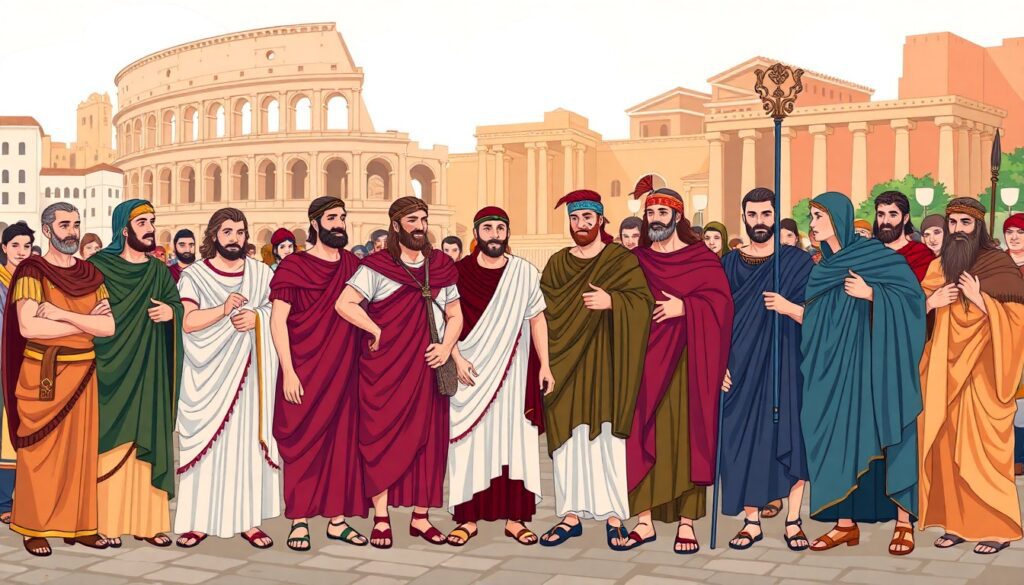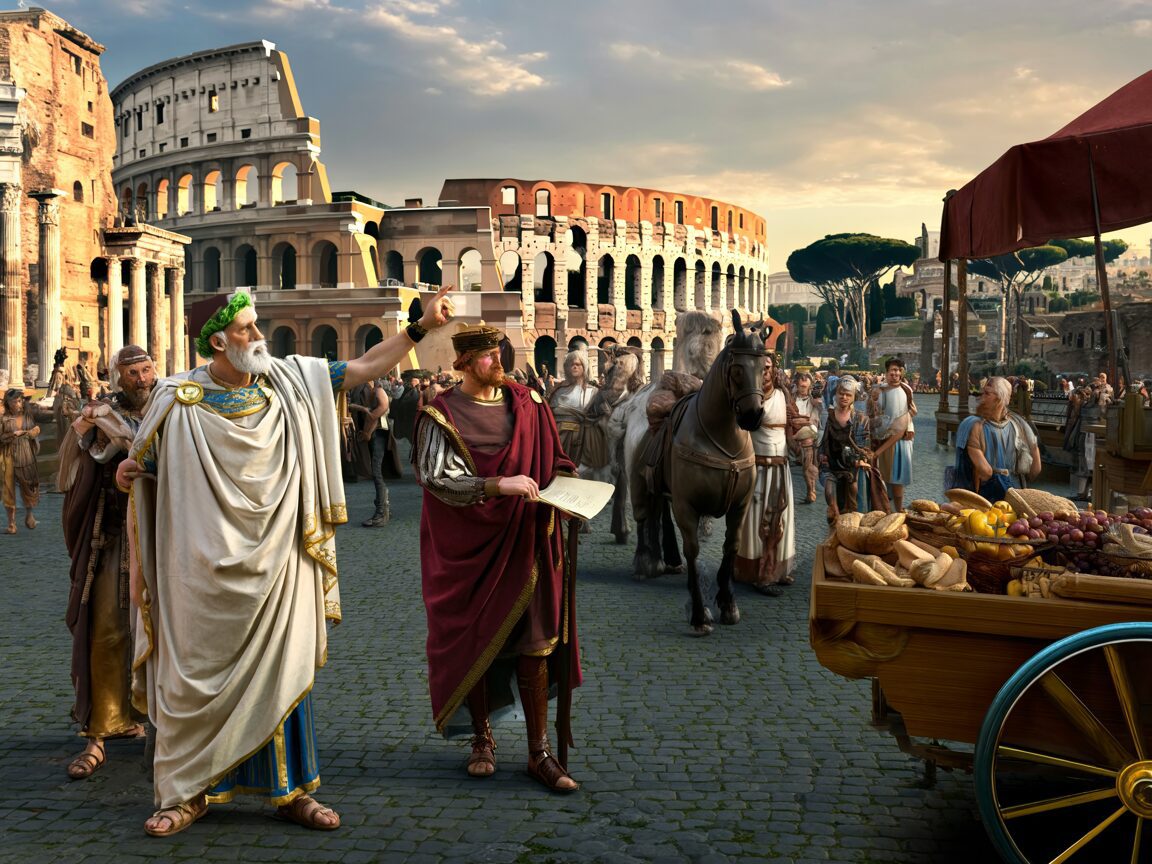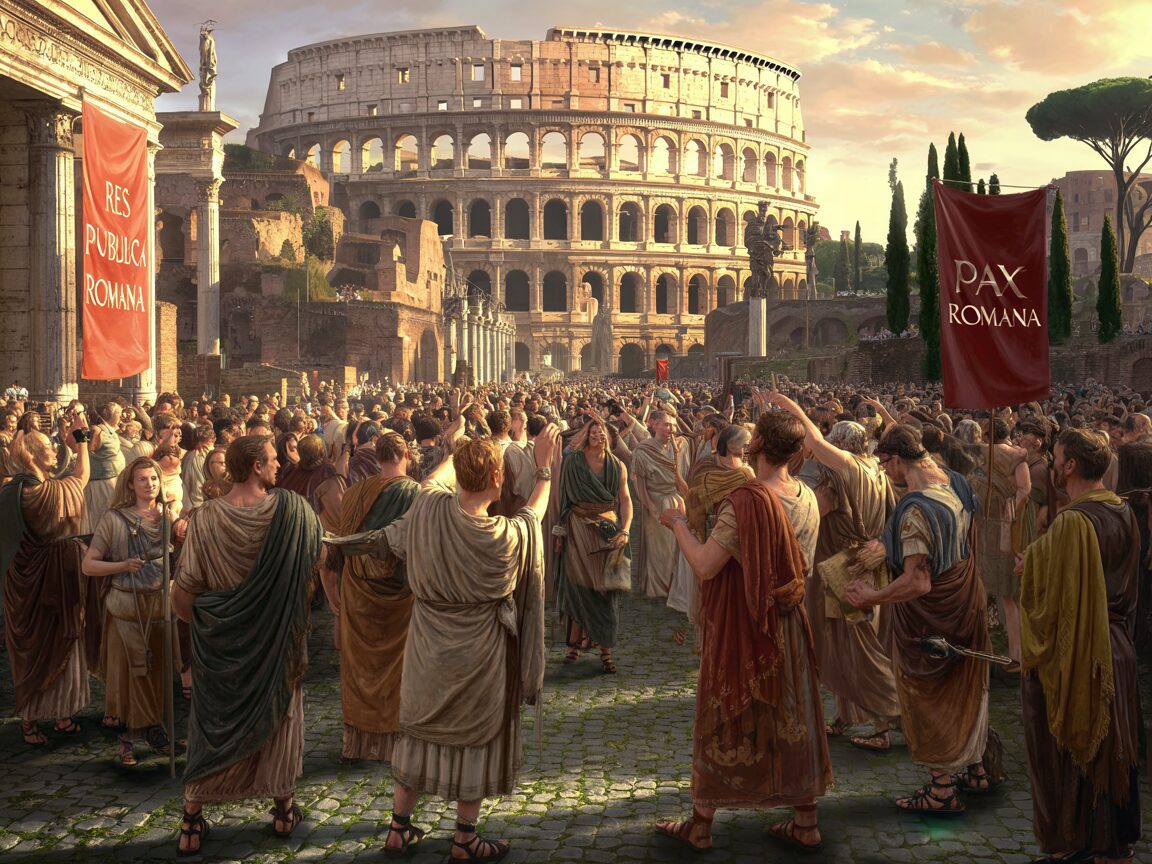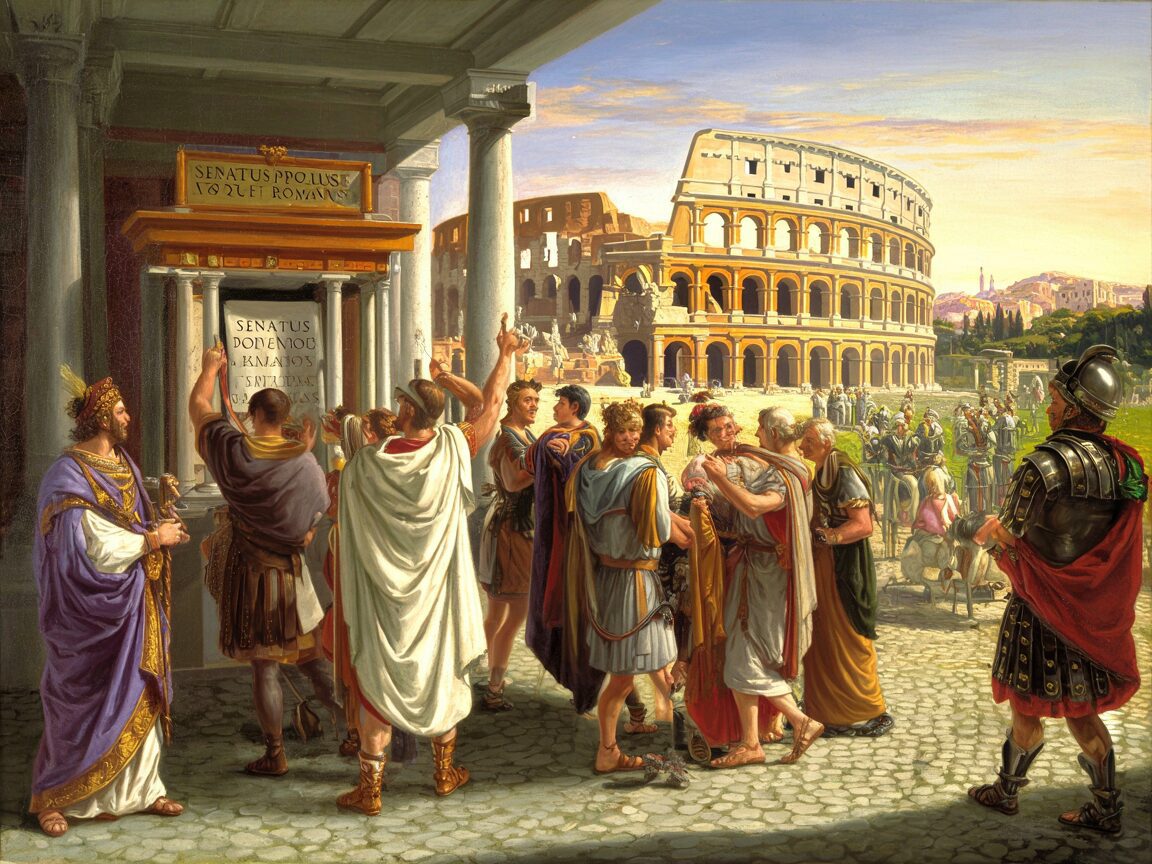The identity of a Roman citizen was deeply connected to the privileges and responsibilities that came with being part of the Roman Empire. It wasn’t just about having a legal status; it was a way of life that influenced how individuals interacted with each other, engaged in politics, and participated in public events.
In this article, we will explore:
- The significance of Roman citizenship and its impact on various aspects of life
- The role of the Twelve Tables in shaping the legal framework of civic identity
- The lasting legacy of Ancient Rome and its influence on Western civilization
By understanding what it meant to be a Roman citizen, we can gain valuable insights into the social, political, and cultural dynamics that defined this remarkable civilization.
The Evolution and Expansion of Roman Citizenship
Roman citizenship began as a legal status closely tied to the city of Rome itself. Initially, only inhabitants of the city who belonged to certain families or tribes were granted this privileged identity. Being a citizen meant more than just residence; it involved specific rights and duties within Rome’s political and social framework. These early citizens enjoyed protections under Roman law, the right to participate in assemblies, and obligations such as military service.
The Evolution of Citizenship
Citizenship evolved alongside Rome’s territorial expansion. As Rome conquered neighboring territories across Italy and beyond, extending citizenship became a strategic tool to integrate diverse populations into the empire. This expansion was gradual:
- Early on, citizenship was often limited to Roman-born males.
- Allies and Latin communities received partial rights, creating tiers of legal status.
- Over time, full citizenship rights were granted more broadly to include these groups.
The expansion of citizenship rights reflected Rome’s effort to unify its growing population under common legal and cultural norms. Granting citizenship came with privileges such as protection by Roman courts and economic advantages like property ownership. Duties such as paying taxes and serving in the military reinforced the reciprocal nature of this status.
The Role of Citizenship in Society
Citizenship played a central role in Rome’s social hierarchy. It distinguished citizens from non-citizens (peregrini), slaves, and freedmen, each group having different legal standings and social roles. Within the citizen body itself, divisions existed based on class—patricians, equestrians, and plebeians—each enjoying varying degrees of influence but sharing the core identity as Romans.
This layered structure created a complex society where legal status, rights, and duties defined one’s place within Roman civilization. For instance, the legal status of Roman women reflected a complex interplay of rights and restrictions that significantly influenced gender dynamics in ancient Rome. Citizenship was not static; it adapted to political needs and demographic changes, helping Rome maintain control over an increasingly diverse empire while fostering loyalty among its subjects.
Military Significance
Moreover, the military aspect of citizenship cannot be overlooked. The Roman Army, a symbol of military power, played a crucial role in the growth and upkeep of the Roman Empire. Its structure, strategies, and operational effectiveness were key in achieving victories across large areas.
Intersection with Entertainment
In addition to this, the realm of entertainment also intersected with citizenship in intriguing ways. Gladiators, who were often seen as heroes for their battle skills, also served as victims within a complex social system that defined their existence.
As we delve deeper into history through articles like this one, we gain a better understanding of how these elements interplayed within the vast tapestry that is ancient Rome’s legacy.

The Rights, Protections, and Responsibilities of Roman Citizens
Civic identity in ancient Rome was intricately tied to the rights, protections, and responsibilities granted to Roman citizens. These aspects encompassed a range of legal, political, and economic dimensions that shaped the daily lives of individuals within the Roman state.
1. Legal Protections
Roman citizens enjoyed a host of legal privileges that set them apart from non-citizens. These protections included the right to a fair trial, immunity from certain forms of punishment, and access to Roman courts for dispute resolution. Roman Law conferred a sense of security and justice that underpinned the social order in Rome.
2. Voting Rights
Political participation was a cornerstone of Roman citizenship. Citizens had the right to vote in various assemblies, elect magistrates, and participate in decision-making processes that shaped the governance of the Republic. This active engagement in public affairs was central to the functioning of Roman democracy.
3. Property Ownership
Economic rights were integral to the civic identity of Roman citizens. Owning property signified social status and economic independence within Roman society. Citizens had the legal capacity to buy, sell, inherit, and transfer property according to [Roman law], enabling them to accumulate wealth and pass it down through generations.
These rights and responsibilities formed the foundation of Roman citizenship, delineating the boundaries of civic identity and shaping individual interactions with the state and society. The interplay between legal protections, political participation, and economic freedoms defined the essence of being a Roman citizen during antiquity.

Challenges and Reforms in Extending Citizenship to New Territories
As the Roman Empire grew and included various cultures and traditions, it faced significant challenges in extending citizenship beyond the city of Rome and its nearby areas. This process became particularly critical during the Social War (91-88 BCE).
The Social War: Conflict Over Citizenship Rights
The Social War was a conflict between Rome and its Italian allies who had long supported the city militarily but were denied full citizenship. Here are the key points:
- Italian allies (socii) had long supported Rome militarily but were denied full citizenship.
- Their exclusion created tensions, as they lacked legal protections and political voice despite their contributions.
- The war erupted when these allies demanded equal rights, challenging Rome’s control and civic identity framework.
- Romans faced a dilemma: granting citizenship broadly risked diluting traditional privileges; withholding it threatened rebellion and instability.
This conflict revealed that Roman civic identity was closely tied to legal status rather than ethnicity or geography alone. It showed how important citizenship was in defining who belonged politically and socially within the empire.
Edict of Caracalla: Universal Citizenship
By 212 CE, under Emperor Caracalla, the Edict of Caracalla brought about a radical change in the concept of Roman citizenship:
“All free inhabitants of the empire are hereby granted full Roman citizenship.”
Here are some key effects of this edict:
- Legal unification across vast territories, simplifying administration and law enforcement.
- Expansion of civic identity to include many peoples once considered outsiders.
- Increased tax obligations on new citizens, balancing extended rights with state revenue needs.
- Reinforcement of loyalty to Rome by offering inclusion rather than exclusion.
This reform marked a significant shift from selective citizenship toward an inclusive civic identity that went beyond local origins. It reflected Rome’s practical approach to governance—using citizenship as both a reward and a means for integrating diverse populations into the imperial system.
The Social War highlighted the limits of how far Rome could restrict citizenship without causing unrest. The Edict of Caracalla addressed these tensions by expanding the citizen body and redefining what it meant to be a Roman citizen within an extensive empire.

The Role of Marriage, Family Rights, and Conubium in Shaping Civic Identity
Civic identity in ancient Rome was closely tied to marriage, family rights, and conubium—important factors that influenced the social structure and integrity of Roman citizenship. These elements were vital in determining individuals’ positions within the civic community and ensuring the preservation of their status through generations.
1. Importance of Conubium
Conubium, or the right to marry between Roman citizens, was a crucial part of civic identity. It ensured that individuals married within the citizen class, preserving the purity of Roman lineage and reinforcing social unity. By limiting marriage to fellow citizens, conubium helped maintain the cultural and legal differences associated with Roman citizenship.
2. Family Rights and Obligations
Roman citizenship came with a set of family rights and duties that emphasized an individual’s role in society. These rights included inheritance privileges, the ability to pass on property to legitimate heirs, and legal protections for family members. Citizenship also carried responsibilities such as serving in the military, contributing to public welfare through taxes, and upholding societal norms within the family unit.
3. Role of Colonies in Integration
Roman colonies played a significant role in bringing new citizens into the Roman state. These settlements often had conubium rights, allowing for the assimilation of diverse populations into the larger civic community. By granting citizenship to residents of colonies, Rome extended its influence and solidified its control over newly acquired territories while fostering a sense of belonging among its inhabitants.
Through marriage customs, familial connections, and the integration of colonies, Roman civic identity was not only preserved but also strengthened across different social classes. The interdependence of these factors helped uphold the values and traditions associated with Roman citizenship, shaping individuals’ roles in society and contributing to the stability of the empire.
Interestingly, aspects of this ancient civic identity can still be explored today through immersive experiences such as role-playing games like Second Life. In particular, some users delve into historical settings such as Romanum where they can experience firsthand the complexities of Roman civic life.
Moreover, understanding the role of agriculture during this period reveals how it was not just a means for sustenance but a crucial driver behind Rome’s economic growth which further solidified its civic structure.
The impact of significant historical figures such as Scipio Africanus also cannot be overlooked. His military strategies during pivotal conflicts like the Second Punic War reshaped Rome’s geopolitical landscape which in turn influenced its civic identity.
Additionally, the ancient Roman religion played an instrumental role in shaping societal norms and values which were integral to one’s civic identity.
Lastly, we must acknowledge that Roman architecture was more than just physical structures; it represented masterpieces of ancient engineering that served as a testament to their power and cultural identity while also influencing their civic life.

Civic Identity, Loyalty, and the Political Implications of Citizenship in Ancient Rome
Roman citizenship shaped both individual and collective identity by creating a powerful sense of belonging to the empire. Being a citizen was more than legal status; it was a marker of inclusion within a vast political community. Citizens shared rights, responsibilities, and rituals that reinforced their connection to Rome and each other.
Loyalty to the empire emerged as a defining characteristic of this civic identity. Citizens were expected to demonstrate allegiance through participation in military service, paying taxes, and supporting Roman laws and traditions. This loyalty helped maintain stability across diverse populations spread throughout the empire’s territories.
Political decisions about who received or was denied citizenship carried significant implications:
- Granting citizenship could secure the allegiance of conquered peoples or allies, integrating them into Rome’s political framework.
- Denying citizenship or withholding rights often led to unrest or resistance, as seen during the Social War (91-88 BCE), when Italian allies fought for equal status.
- Citizenship became a tool for emperors to reward loyalty or consolidate power by expanding or restricting access to its privileges.
This dynamic made civic identity fluid yet deeply tied to the political realities of Roman rule. The Roman Empire was not merely a political entity; it was a tapestry woven from diverse cultures, languages, and traditions.
The rise of Stoicism in Rome, which emphasized living in harmony with nature and practicing virtue, also played a significant role in shaping this civic identity. Furthermore, Roman roads served as vital infrastructure that maintained and expanded the empire, ensuring effective governance and cultural exchange.
Additionally, the 10 incredible Roman engineering feats that changed the world are testaments to this enduring legacy. These achievements not only connected far-flung regions but also served as a foundation for contemporary infrastructure systems.
Lastly, the rich art and culture of ancient Rome reflects the ingenuity and creativity of this civilization, marking an era that thrived from 753 BC to 476 AD.

Class Divisions Within Roman Citizenship: The Influence of Patricians, Equestrians, and Plebeians on Civic Identity Formation
Roman society was deeply structured by class distinctions that shaped the experience and meaning of citizenship. Three primary social groups defined civic identity: patricians, equestrians, and plebeians.
1. Patricians
This aristocratic class traced its origins to Rome’s founding families. Patricians held exclusive rights to religious offices, key political positions such as senators, and significant landholdings. Their status reinforced a civic identity rooted in tradition, prestige, and authority. Being a patrician citizen meant access to power structures that shaped Rome’s governance and cultural values.
2. Equestrians
Known as the wealthy business and landowning class, equestrians occupied a middle position between patricians and plebeians. They were often involved in commerce, tax collection, or financial enterprises. Equestrians contributed to civic identity through economic influence rather than hereditary prestige. Their rise in prominence during the late Republic reflected shifting social dynamics within citizenship.
3. Plebeians
The largest social group comprised common citizens with limited initial political privileges. Over time, plebeians secured greater rights through reforms such as the establishment of the Tribune of the Plebs. Civic identity among plebeians emphasized participation in assemblies and local communities, fostering a sense of belonging based on shared rights rather than elite lineage.
Class divisions influenced how Roman citizens perceived their role within the state and interacted with each other. Patron-client relationships often crossed these lines but reinforced social hierarchies embedded in citizenship itself. Understanding these divisions is essential to grasping the complex fabric of Civic Identity in Ancient Rome: What It Meant to Be a Roman Citizen.
Daily life in Ancient Rome was vastly different for various social classes, especially the patricians and plebeians. For an insight into their daily activities, traditions, and ways of living, you can explore this article on the social class divide.
The influence of Roman law is still felt today, particularly through the Corpus Juris Civilis, which was commissioned by Emperor Justinian I in the 6th century AD.
Moreover, understanding the influence of Roman mythology on modern culture can provide additional context about how these ancient societal structures impacted contemporary beliefs and values.
Conclusion
Civic Identity Summary
Roman citizenship was a cornerstone of civic identity in ancient Rome, granting specific rights and responsibilities that shaped individual and collective identities.
The evolution and expansion of Roman citizenship highlighted its transformative journey from a privilege of a select few to a status extended to all free inhabitants of the empire.
Rights, protections, and obligations associated with Roman citizenship underscored the intricate balance between privileges and duties within the Roman state.
Challenges in extending citizenship to new territories, such as during the Social War and reforms like the Edict of Caracalla, showcased the dynamic nature of civic inclusion in Rome.
Class divisions among patricians, equestrians, and plebeians reflected social stratification and influence on civic identity formation.

